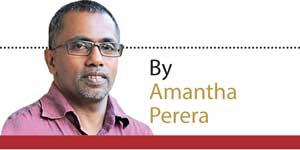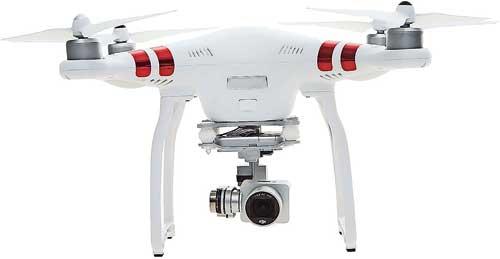18 Nov 2020 - {{hitsCtrl.values.hits}}
- When the announcement was made that drones had been inducted for the surveillance work, there was hardly any reporting that looked into the ethical and legal concerns of such usage as well as the tech capability
- The drone can be very far from you and still track your movements, through windows, thin coverings (e.g. cars), even at night, low-light
- This inability to understand the true potential that drones bring in to journalism is also reflected in why the media has failed to report the latest developments in a more constructive manner. The technology has been evaluated for its invasive effect than anything else
Drones became the latest high-tech gizmo added to Sri Lanka’s fight to collar COVID-19. Last week it was  announced that drones were being used to monitor curfew violators from the air, along
announced that drones were being used to monitor curfew violators from the air, along
with helicopters.
They join other tactics like mobile phone tracing to track down infections. Though high-ranking security officers have indicated that phone data was being used for the purpose, nothing more is known.
Phone users have no idea what type of data is being looked into, if at all they are being tracked, whether mobile networks are sharing data without notifying users and under what conditions the data
is shared.
The dangers of using drones for similar work raises issues linked not only to violation of data and privacy rights, but also invasion of personal space.
When the announcement was made that drones had been inducted for the surveillance work, there was hardly any reporting that looked into the ethical and legal concerns of such usage as well as the tech capability.
My colleague Sanjana Hathotuwa was the only one who took a deep dive into both of these areas. He wrote on Twitter that the capacity of the drones that were on display exceeded those of civilian drones available off the shelf.
" Drones used in the public displays could fly a 15km radius with a flight time of 55m. They also have vehicle tracking capabilities "
Commenting on the Zenmuse H20 camera that one of the drones was outfitted with, Hathotuwa warned “with thermal imaging, night vision capabilities. No joke. Chilling prospect to have this flying overhead.”
He added that drones used in the public displays could fly a 15km radius with a flight time of 55m. They also have vehicle tracking capabilities.
“Put simply, the drone can be very far from you and still track your movements, through windows, thin coverings (e.g. cars), even at night, low-light ,” he wrote on Twitter.
More bluntly explained, this industrial level drone is akin to having a professional camera with zoom capability flying overhead, even at night and there is no flash.
There has been no information forthcoming on data privacy and data retention linked to drone use
for surveillance.
Why this disclosure is important is citizens need to know how their privacy is being compromised and invaded. 
The public has no idea - who will have access to the data, under what conditions these drones will be flown or how long and where the data will be stored, or whether they are guided by Civil Aviation Authority regulations or outside of them.
Drone flying was becoming quite popular in Sri Lanka in recent years. There was industrial level drone use, the most common in wedding photography. I was once told that drones were the must-have wedding photo-app now.
Hathotuwa had pioneered the use of drone use for reporting sometime back. An effort that I was involved in.
Our aim was to promote drone use as an add-on to reporting. We had limited success.
We did two field-reporting assignments with groups of reporters to the Eastern and Southern Provinces. The reporting showed how drones could be used to advance reporting on environmental degradation, drought impact, urbanisation and illegal deforesting. The possibilities were clearly ground-breaking.
However, there was not much buy-in from journalists for pro-active use of drones for reporting, even after several introductory workshops were done through the patronage of the Information Department.
I heard occasional stories of drones being flown through Hambantota Port or flying over protesting crowds. The worst was the drone that flew overhead when the body of slain editor Lasantha Wickrematunge was exhumed. Police officers ran after the drone to apprehend the machine and the flyer. Neither were ever located.
This inability to understand the true potential that drones bring in to journalism is also reflected in why the media has failed to report the latest developments in a more constructive manner. The technology has been evaluated for its invasive effect than anything else.
Then drone-flying came to a halt. That was soon after the Easter Sunday Attacks when a blanket ban was issued.
There is no disputing the need and use of new technologies to meet this unprecedented pandemic. But there is also a need to disclose how they are being used and the benefits recouped.
The writer is a Post-grad Researcher at CQUniversity, Melbourne focusing on online journalism and trauma
Twitter - @amanthap
30 Nov 2024 3 hours ago
30 Nov 2024 4 hours ago
30 Nov 2024 7 hours ago
30 Nov 2024 9 hours ago
30 Nov 2024 30 Nov 2024